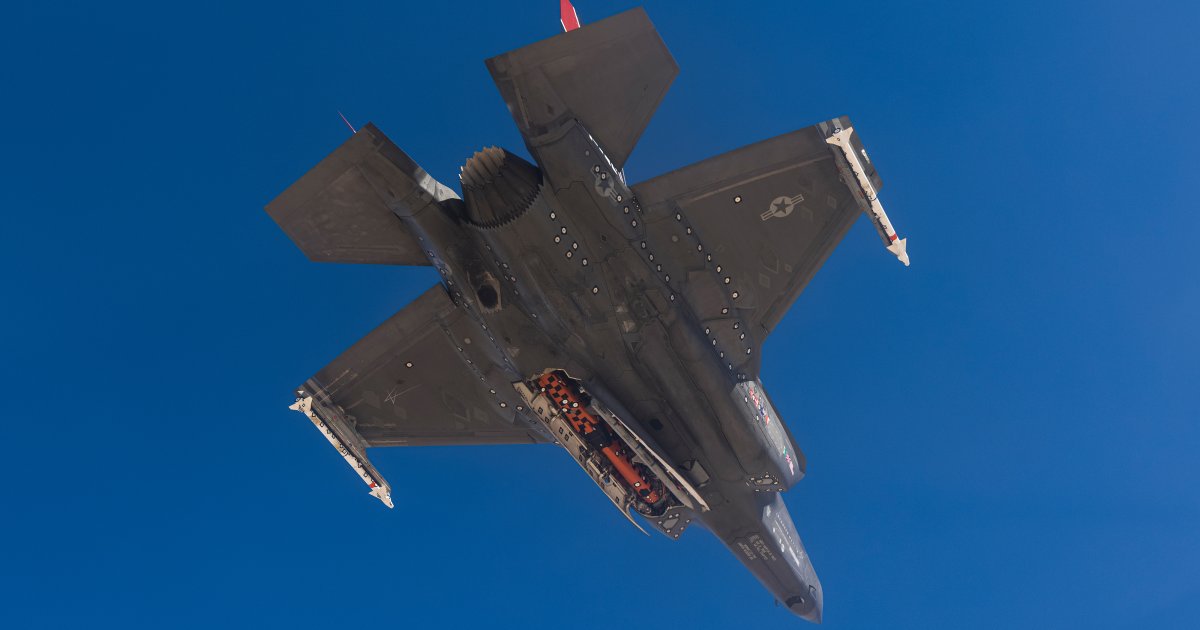Post 1 of 2: Providing Context
This is now the third US service to apparently want to reduce their F35 buy.
And yet, the F-35 production run duration remains with buys from allies and partners from Japan, Korea, Poland, Singapore and so on which will make up for the reduced buy from three US military services. The current wait list for a new buying country without the US military adjusting its buy slots is 7 to 9 years.
1. The USAF needs to admit that it has a force structure issue that was created when the F-22A production was ended early at 187 — with its companion F-15EX buy and the USAF’s
Next Generation Air Dominance (NGAD) program’s demonstrator that is being tested (as a F-22A replacement). The USAF effort should not be confused with the US Navy’s effort that has the same program name.
(a) There are known
issues with shortages of the F135 engines that has hit the fleet and noted that in 2021 “roughly 5 to 6 percent” of the aircraft could be without engines due to a combination of scheduled depot maintenance and unscheduled engine removals.
(b) In
an interview Dr Will Roper (often referred to as the “USAF acquisition czar”) said that the F-35 sustainment point is not where it should be, explaining that “right now the F-35 has a good ‘sticker price,’ but its cost of ownership is not where it needs to be, making the quantities that the Air Force may need to purchase in question”.
(c) F-35A cost per flying hour (CPFH) calculations can vary significantly but all of them add costs for the JSF program that they do not include for other 4.5 generation fighters they compare it to. ECM and a precision infra-red targeting system are built into the F-35, elevating its maintenance requirements and ultimately its CPFH. Fighters like the F-15EX, F-16V and FA-18E require additional equipment like external pods to give them similar capabilities but, because they are not “built in,” the pod’s acquisition price is not factored into those 4.5 generation jets’ purchase price, nor are maintenance costs for those systems included in their CPFH calculations.
(d) The JSF program office hopes to bring the F-35A CPFH down to its eventual target of US$25,000. If that happens in 2025, the F-35’s CPFH can begin to compare much more favorably with the F-16 CPFH of US$25,541 (FY12 dollars).
(e) Increasingly, the TRL level of an idea is important consideration (see point 7 below for the NASA link which explains). What we are seeing is digital engineering at work — the so-called eSeries concept — has also become a hallmark of the USAF’s
new T-7A Red Hawk trainer, as well as the NGAD program, which is taking a system-of-systems approach to developing future aerial combat capabilities.
(f) The USAF Chief of Staff, Gen. Charles Q. Brown Jr. suggested the new tactical fighter would be tailored to work complementary to NGAD, as well as the F-35. Instead of exclusively buying the F-35, as had long been its plan, the USAF is studying a future fighter fleet that might include new-build F-16s or possibly a clean-sheet 4.5th-generation fighter, said USAF chief of staff General Charles Brown on 17 Feb 2021.
(g) The USAF first strayed from its stealth aircraft buying plan in 2020 when it started buying the Boeing F-15EX to replace the F-15C. Brown has asked for a study into the service’s future force mix, which could include a “clean-sheet design” to replace the F-16.
(h) If you ask me, I am less keen on loyal wing man to work along side F-35s and more keen on DARPA’s long-shot, which will enable non-VLO fighters and sensors operating in the maritime domain (eg. B-1B, P-8A, F-15J, F-15K, F-15SG, F-18E block 3, EA-18G Growler and so on) to remain threat relevant in the 2040s.
(i) The EA-18G Growler is a serious EW and ECM asset to any operator. The Growler is in essence a combination of a SIGINT-platform gathering data from anything that is emitting, as well as a jamming platform blocking any system from emitting anything useful, be it communications or radars. The wingtip ALQ-218 RF Receivers are described as “extremely good” and tell the pilot not only what is out there, but also where it is. The crew can then decide what to do with that information, whether to engage with weapons, avoid, or jam. The amount of information on the electronic order of battle gathered by the Growler is huge (with the snapshot of what the Growler
visiting during HX Challenge managed to capture simply through its passive sensors) and seen as “eye-opening” with regards to the “saturation of information”. This is where the dedicated crew member comes into play.
(j) Certainly in the late 2030s, F-15SG’s CONOPS for WSO training program or EA-18G CONOPS for training the 2nd crew member, both in a maritime strike/SEAD role is going to be increasingly copied or replicated in a systematic fashion by various countries in the Indo-Pacific.
2. I believe we will see resistance to developing certain types of CONOPS but easy adoption of certain CONOPS as an evolution of an existing idea. In Feb 2020, the US Navy flew two Boeing EA-18G Growlers as autonomous unmanned air vehicles, using a third Growler as a flight controller — the WSO is controlling the UAVs.
3. IMHO, DARPA’s long-shot is going to be more successful in FMS buys than LRSM will be in the medium term; where the WSO programs the flight profile of these munitions that are in essence loitering munitions — as a variation of SEAD mission sets, needed for modem maritime strike.
4. The B-21 program and its speedy roll out shows that the USAF needs to retire the B-1B faster than I expected. VLO requirements have evolved since the F-35 program has started testing.

www.defensenews.com




